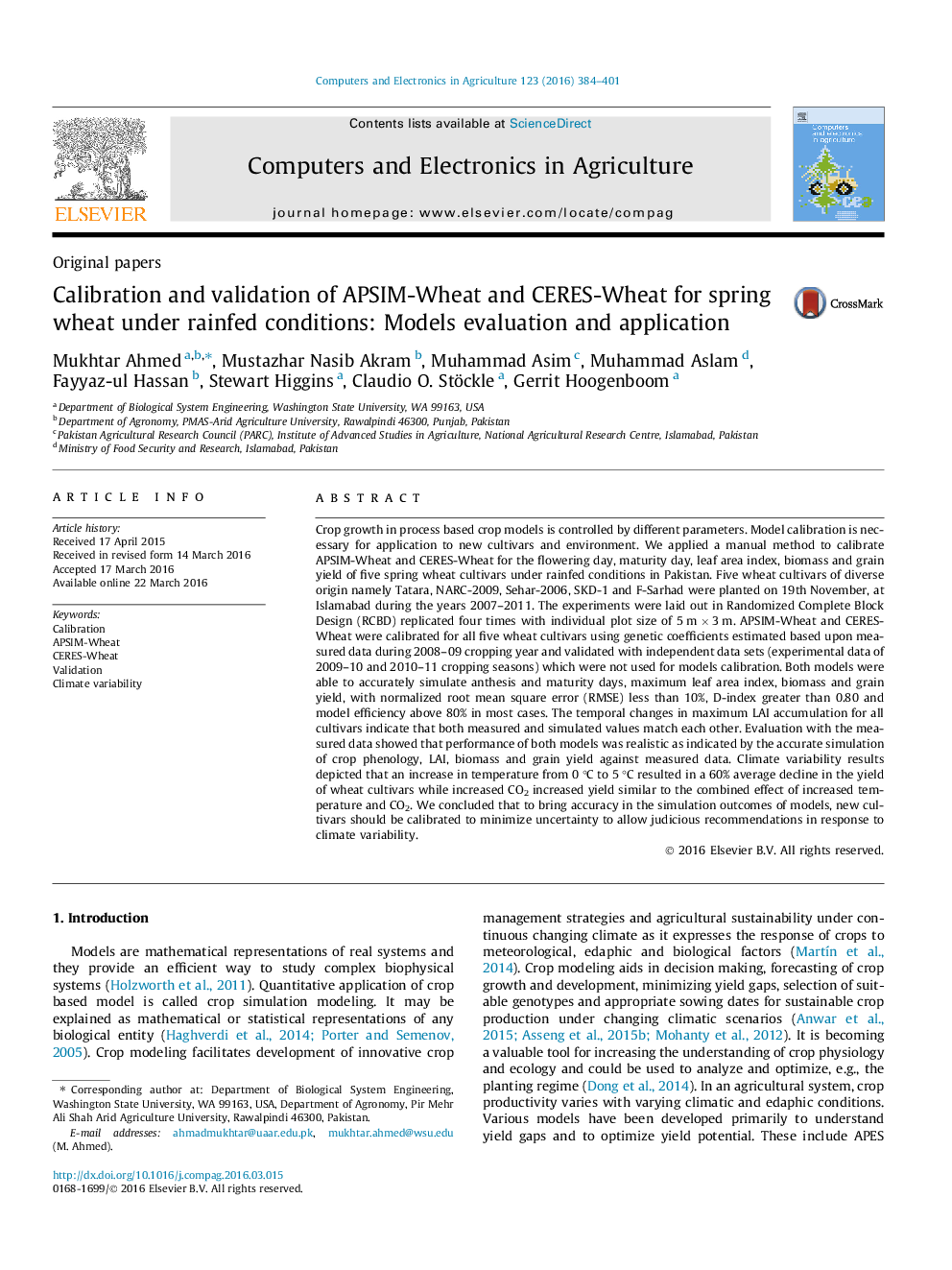| کد مقاله | کد نشریه | سال انتشار | مقاله انگلیسی | نسخه تمام متن |
|---|---|---|---|---|
| 83972 | 158856 | 2016 | 18 صفحه PDF | دانلود رایگان |

• Phenology, the first step of calibration of models.
• Robustness of APSIM-Wheat and CERES-Wheat in simulating spring wheat phenology, LAI, biomass and yield.
• Calibration is necessary to minimize uncertainty.
• Models as decision support tools in agriculture under climate variability.
Crop growth in process based crop models is controlled by different parameters. Model calibration is necessary for application to new cultivars and environment. We applied a manual method to calibrate APSIM-Wheat and CERES-Wheat for the flowering day, maturity day, leaf area index, biomass and grain yield of five spring wheat cultivars under rainfed conditions in Pakistan. Five wheat cultivars of diverse origin namely Tatara, NARC-2009, Sehar-2006, SKD-1 and F-Sarhad were planted on 19th November, at Islamabad during the years 2007–2011. The experiments were laid out in Randomized Complete Block Design (RCBD) replicated four times with individual plot size of 5 m × 3 m. APSIM-Wheat and CERES-Wheat were calibrated for all five wheat cultivars using genetic coefficients estimated based upon measured data during 2008–09 cropping year and validated with independent data sets (experimental data of 2009–10 and 2010–11 cropping seasons) which were not used for models calibration. Both models were able to accurately simulate anthesis and maturity days, maximum leaf area index, biomass and grain yield, with normalized root mean square error (RMSE) less than 10%, D-index greater than 0.80 and model efficiency above 80% in most cases. The temporal changes in maximum LAI accumulation for all cultivars indicate that both measured and simulated values match each other. Evaluation with the measured data showed that performance of both models was realistic as indicated by the accurate simulation of crop phenology, LAI, biomass and grain yield against measured data. Climate variability results depicted that an increase in temperature from 0 °C to 5 °C resulted in a 60% average decline in the yield of wheat cultivars while increased CO2 increased yield similar to the combined effect of increased temperature and CO2. We concluded that to bring accuracy in the simulation outcomes of models, new cultivars should be calibrated to minimize uncertainty to allow judicious recommendations in response to climate variability.
Journal: Computers and Electronics in Agriculture - Volume 123, April 2016, Pages 384–401